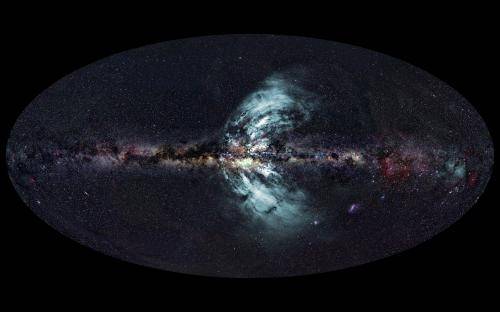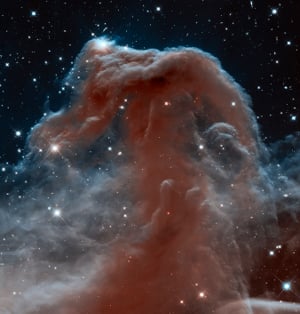This article is more than 1 year old
2013: A Space Odyssey - a cosmological review of the year
Asteroids 'n' comets, our new home Mars and the adventures of Jade Rabbit
Year in Review Space this year was dominated by space rocks big and small - whether we want to dodge 'em, mine 'em, or watch 'em explode near the Sun, we sure do love those asteroids, comets, meteors and meteorites.
2013 was also another year in Earthlings' continued obsession with all things Martian. We want to go there and we want to live there, but in the meantime we'll happily take the taste of the Red Planet we can get from NASA rover Curiosity's trundle across the surface.
Sprinkled across the last 12 months were China and India's continued strides into spacefaring nation status, Voyager's mission to boldly breach our solar system's bounds for the first time and the ongoing mission of spacecraft like the International Space Station.

PICTURES OF THE YEAR: The truly enormous jets of matter flung out from the centre of the Milky Way galaxy, caused by stars forming and exploding. Full story here.
We're all going to die
The year was just six days young when NASA let asteroid-watchers know about the expected flyby of 99942 Apophis, the mighty rock named after an ancient Egyptian god of evil and darkness. While it wasn't a proximity warning for any time soon, the space agency does think there's a "tiny chance" of Apophis crashing into the Earth in April 2036. That wouldn't be too big a problem if the asteroid wasn't 20 per cent bigger than astroboffins had previously calculated, still, it's a problem for another day.
While all eyes were on the frighteningly monikered and growing Apophis, everyone failed to see the space rock that actually did crash into Earth on 15 February. The meteorite would eventually come to be known by the name of the area in the Russian Urals where it hit, Chelyabinsk.
The meteorite, estimated to weigh 10 tonnes, hit the atmosphere at a speed of around 54,000kmph and shattered around 30km to 50km above the ground into a shower of fireballs that rained down, injuring over a thousand people and causing a dust plume that was seen from space.
Undaunted, the local residents and scientists dashed out to gather pieces of the meteorite, which were rumoured to be fetching as much as $10,000 on the open market in the days after the impact.
After the fact, boffins were able to figure out that the rock came from the Apollo class of asteroids in the Solar System's belt, a bunch of 'roids that regularly cross the world's orbit.

PICTURES OF THE YEAR: Hubble's new infrared snap of
interstellar spectacle the Horsehead Nebula. Full story here.
Some people had been concerned that the Chelyabinsk space rock was actually the first piece of the largest recorded asteroid to do a close pass of the Earth, which in a crazy coincidence was due on the same day, 2012 DA14. The asteroid passed over Southeast Asia at just 27,600km and headed safely off past the Moon. The next time there's even a tiny possibility of it hitting will be 2080, so that's another rock out of the way for the moment.
That didn't stop Chelyabinsk from stirring a little worry in the halls of power about just how safe Earth is from passing space rocks. Experts called to the US House Committee on Science, Space and Technology told the government that billions of dollars were needed to protect people from smaller meteorites, which slip through near-Earth object (NEO) detection methods but can still be fatal.
Although NASA reckons it has found 93 per cent of the larger NEOs, there are thousands smaller than a kilometre that could be anywhere. NASA chief Charles Bolden admitted that if warning on the big ones was any less than years, there wouldn't be anything anyone could do:
If it's coming in three weeks ... pray. The reason I can't do anything in the next three weeks is because for decades we have put it off.
A few months later, NASA announced that a new grant would let it restart its decommissioned Wide-field Infrared Survey Explorer (WISE) telescope to search for asteroids. The new mission is an extension of the NEOWISE project to take a broad snapshot of the space around Earth and use it to find more 'roids that could slam into our planet.
